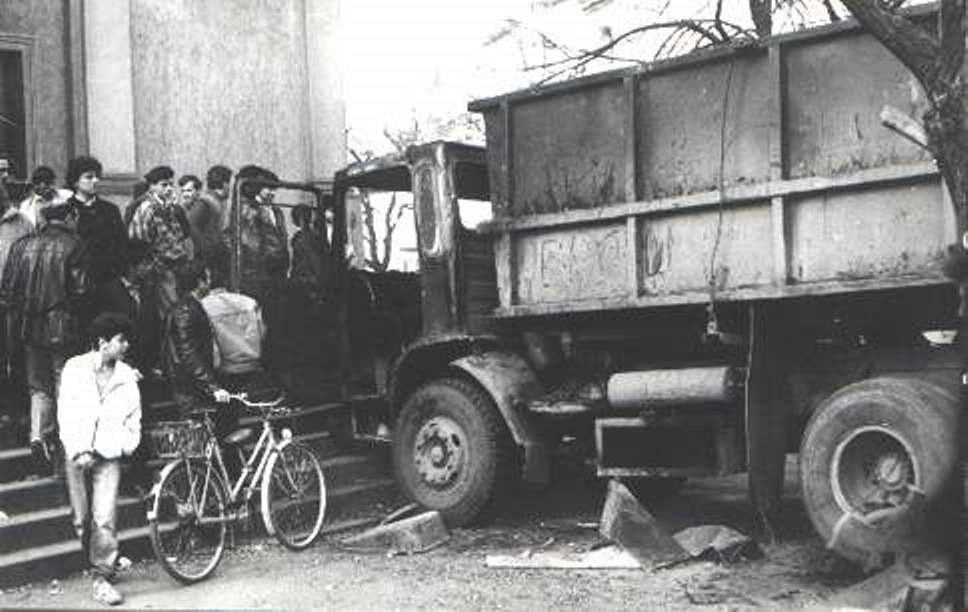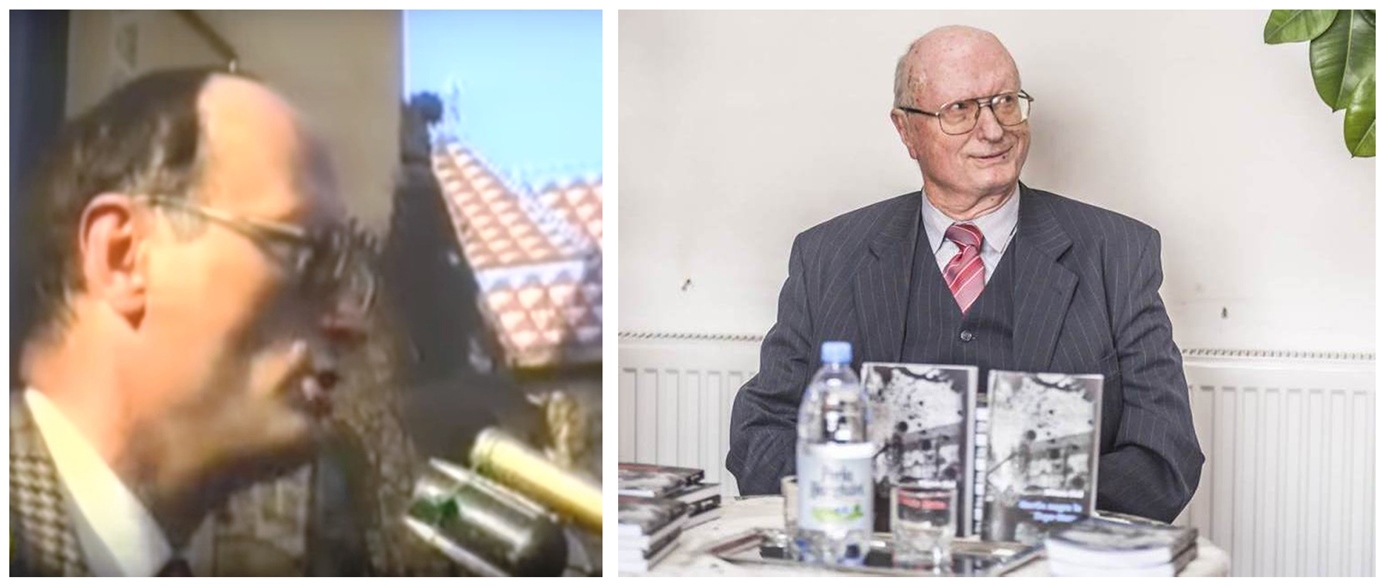29 years ago -in March 1990- a pogrom took place in Marosvásárhely/Târgu Mureș, also called the Black Spring, which represented perhaps the “first blood” of the post-Communist settlement in Eastern Europe. In the biggest town of Székelyföld (with more than 160 000 inhabitants, 52% Hungarian and 48% Romanian, that time) the liberation turned into pogrom in only three month after the revolution of December 1989, when Romanians and Hungarians embraced each other in tears celebrating the end of the Ceaușescu’s dictatorship.
This is the second part of the article. For the first part – which includes the antecedents and the events of 19. March- click here.
20. March 1990 – the „Battle”
In the morning of March 20, about 15,000 ethnic Hungarians gathered in the town’s main square to protest against the previous day’s events. A group of ethnic Romanians began to gather on one side of the square and by early afternoon they were approximately 3,000. Tensions escalated as word spread that buses of Romanian peasants from neighboring villages like Hodac/Hodák, Ibanesti/Libánfalva and others, were heading toward the town again to support the Romanians at the square. By 14:30 the Chief of Police gave assurances to both ethnic Romanian and Hungarian leaders in the square that the police had blocked the entrances to the city. But this was not true, instead police allowed buses of ethnic Romanians through the roadblocks. And so at 17:30, violence erupted when Romanians – breaking the single line of 50 policemen that the authorities had sent to separate the two groups – attacked the unarmed Hungarians with their “traditional working tools”, like axes, bludgeons and pitchforks. First the Hungarians were escaping from the square but then they tried to arm themselves by dismantling fences and benches and return to the scene- indeed, after this it was possible to know who was Hungarian because they held green staves. Later on also Molotov cocktails were being produced and thrown at the Hungarians.

At about 20:00, small parties of young men began to arrive, all of them wearing white shirt so that they would identify each other, and they were well armed. The Hungarian Gypsies from the surrounding villages arrived and shouted: „Hungarians never fear! The Gypsies are here!” The Hungarian crowd roared, and together, they attacked and forced the Romanians back behind the armored vehicles. One of the Gypsy leaders later told to Kincses that: “we are Hungarian Gypsies, and it hurts us if the Hungarians are being beaten! Today you, tomorrow us …”
Although the police and army had been made aware of the potential for violence by both Hungarian and Romanian leaders, who had made numerous reports of the escalating tensions in the square, the authorities failed to respond in an adequate manner. According to a 1990 report by Human Rights Watch:
“The authorities… failed to respond in an adequate manner to protect the citizens of Marosvásárhely/Târgu Mureș”
The results
Five people died (2 Romanians and 3 Hungarians), and almost three hundred were injured before the Romanian army finally intervened and restrained the clashes on the third day. Later, more than forty people were convicted – all of them, except two, Hungarians or Hungarian Gypsies. The attackers of András Sütő had never been identified or convicted. In the following years, the number of the city’s inhabitants fell by 10 percent. Most of the people leaving the town were Hungarians who moved to Hungary, changing the ethnic composition of the town as well.
The reasons why the ethnic clashes didn’t turn into a civil war like it did in Yugoslavia for example
,Political scientist from Bucharest Gabriel Andreescu, has pointed out at a round-table discussion in Budapest in 2012 that Romania was not Yugoslavia, and that a particular model of communication played an important role, because there was communication between the Hungarian and the Romanian intelligentsia. The Romanian writers also came up against Iliescu in 1990, unlike the Serbian Writers’ Association, which supported Milosevic’s nationalist policies in Belgrade, Yugoslavia. In other words, there were forces which were not interested in deepening the conflict and eventually managed to avoid civil war in Romania.

Looking from another aspect, also the fact that the Hungarian leaders could convince Székelys living in Székelykeresztúr/Cristuru Secuiesc, Székelyudvarhely/Odorheiu Secuiesc and Csíkszereda/Miercurea Ciuc not to come to Marosvásárhely, helping to protect fellow Hungarians after the anti-Hungarian atrocities of 19 March, was definitely a major component in avoiding the escalation of the conflict. According to Előd Kincses – who himself alone convinced 12,000 people in Székelyudvarhely to stay at home in the morning of March 20 – this was the reason why Jiu Valley miners, already on their way to Marosvásárhely, were finally turned back from Székelykocsárd/Lunca Mureșului, only 40 kilometers from the town.
Title Image: Black Spring in Marosvásárhely/Târgu Mureș in March 1990. (Photo: György Vajda / Collection of Bernády Foundation)